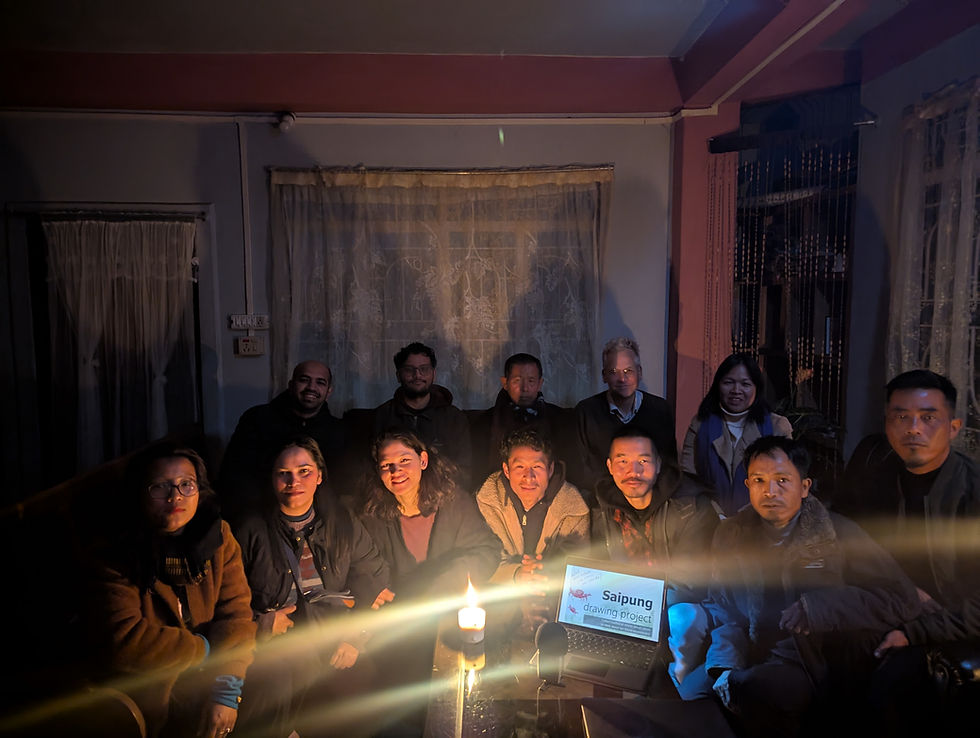Growth Is Where We Belong: Finding a safe haven in CMYC
- sauramandalain
- May 26
- 4 min read
The CMYC project had only recently come onto my radar; therefore, through my work as an intern with the Sauramandala Foundation, I approached the visit to some of the centers expecting to observe, take notes, and perhaps document, but what I encountered was far more personal. When I set out to visit the centers I was unsure of what to expect from it.
Though I had done my share of research beforehand, nothing could have prepared me for the experience of physically being there present in the space firsthand, and it was nothing short of fresh, alive, and impressive.
The CMYC serves as a self-learning ecosystem for the people residing in the rural areas where access to resources is limited and opportunities are often unevenly distributed. However, these centers stand firmly against all those odds. The centers successfully leverage the most humane qualities of life, which is a sense of belonging, to foster community engagement.
Here, learning is not confined to textbooks or structured lessons. It grows organically through curiosity, community, and lived experience. The CMYC promotes a healthy, non-conventional approach to education, encouraging self-learning and collaboration in a way that feels intuitive rather than imposed.

The nook is a small but alive with colour and laughter.
What makes these centers so effective is the adaptability with which they operate. Each CMYC adapts to their environment in their own unique way, minutely integrating the people and their needs, which differ from one village to another. This flexibility allows the CMYC to accommodate varying demographics with ease. No two centres are alike. Each one is shaped by its environment and its people; it feels like a living character with its own quirks and warmth.
During my time observing the centers, I realized that these spaces were more than educational initiatives, but they were sanctuaries. Safe havens not only for children but also for teenagers and adults who long for a space that welcomes them without judgment. CMYC not only provides the learners with resources but also offers them a safety net that they can fall back upon even if they fail, encouraging them to continue.

Impressions of every child that visits the library stays behind like fingerprints. The environment in the libraries have a very subtle quality one finds in loving lived-in homes.
The thing that stayed with me even after leaving the centers was the atmosphere of trust. The learners asked questions without hesitation, admitting when they did not know certain things, and made mistakes freely, which is a key component of positive learning. Unlike traditional educational institutions, which utilize factors such as fear and competitiveness, these CMYCs encourage curiosity by minimizing the fear of failure and judgment. There was no competition, no pressure, but only a shared understanding that this was a space where everyone had something to give and something to learn.
The fellows, some of whom are from the same village, play an essential role.
They are more than just instructors; they are also mentors, friends, and guides. Their reassuring presence pushes the learners towards excellence. They are quick on their feet to adapt to the needs of the learners at any moment.
Even the smallest of victories are celebrated. Whether it is a drawing proudly pinned on the library wall or a poem kept preciously in neat folders are all reminders that even small achievements are worth recognizing.

Drawn pictures of the children pinned proudly in the library.
The centre feels like home to most of the learners. A home where shoes and slippers are scattered at the front door, laughter bounces off the walls, and no one is afraid to speak. The layouts of the centers are different from one centre to the other; however, certain elements stay central to all.
There’s a nook filled with tools and projects: flower stands, chairs, clothes, and even a baby crib made by a learner. The kitchen feels warm and smells delicious, with ingredients ready for making food and pastries. The library is full of books and colorful stories awaiting little learners to start their adventure. Art supplies are laid out freely for anyone to use and create. Outside, the sports field is full of energy, children and youth playing a game of frisbee together.

What struck me the most was the profound sense of safety that the learners experienced in their hearts. I spoke with Ailysha, one of the learners at Nongwah, who told me that the centre feels like a second home to them. They enjoy spending time there so much that they would stay as late as possible, until the fellows would have to gently “chase” them out to remind them to head back home. That simple comment in that moment made me realize just how deeply they cherished the centre and how much comfort and belonging it offers. Just like a home, the centers feel inviting and are not forced upon them.
On a personal level, it was a humbling reminder that real development isn’t measured in numbers but in moments: a child’s voice trembling with confidence, a grown-up proudly crafting something by hand, or a shy smile breaking into laughter.
The CMYC embodies the true spirit of community-led development: a space shaped with people, not merely for them. And as I move forward in my own journey, I hope to carry this lesson with me: when it is sincere, change always begins at the most human level.
Written by Ilarihun Shangpliang as part of her internship with Sauramandala Foundation




Comments